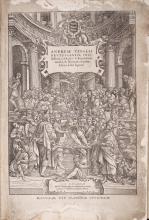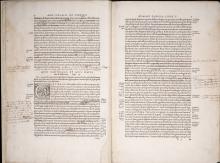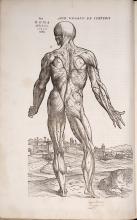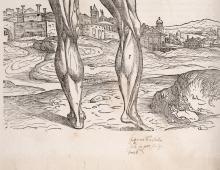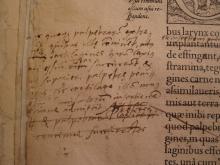Earlier this year, the Fisher was honoured to receive, on a deposit, a copy of the 1555 edition of Andreas Vesalius’s De humani corporis fabrica, printed and published by Johannes Oporinus of Basel. Receiving a copy of this edition of Vesalius's landmark work on human anatomy was noteworthy in itself. However this was no ordinary copy: as it turned out, this edition had been extensively annotated by Vesalius himself.
Andreas Vesalius (1514–1564) of Brussels is generally considered to be the founder of modern anatomy. His De humani corporis fabrica, first published in 1543 (click on link for the Fisher's copy), is unquestionably one of the most important books in the history of medicine, and one of the wonders of Renaissance book production. Beautifully printed by Oporinus, the book was unlike anything that had beem done before. The outstanding woodcut illustrations set a new standard for anatomical illustration, and were widely copied for the next three centuries.
The 1555 copy of De fabrica on deposit at the Fisher contains over a thousand interlinear and marginal annotations, in the form of additions, deletions and transpositions. There is scarcely a page that does not have some kind of revision on it. Many of them are stylistic improvements, which do not affect the essential meaning of an idea but express it much more elegantly and succinctly. In addition to these changes, a good deal of anatomical information has been inserted or revised in light of Vesalius’s own studies and reading since the first edition.
This special volume, which will be the showpiece of a planned exhibit in the summer of 2014 at the Fisher honouring the 500th anniversary of Vesalius's birth, provides us with a fascinating glimpse of Vesalius at work.
For a more detailed examination of this copy of the book, please read the article (click on the link) published in the October 2012 issue of Medical History. It is written by Vivian Nutton, Emeritus Professor of the History of Medicine, University College London, who was the first scholar to subject the volume to a thorough critical examination.
Some examples of the 1555 copy of the book held at the Fisher can be seen below. Please click on the image for a larger view.
